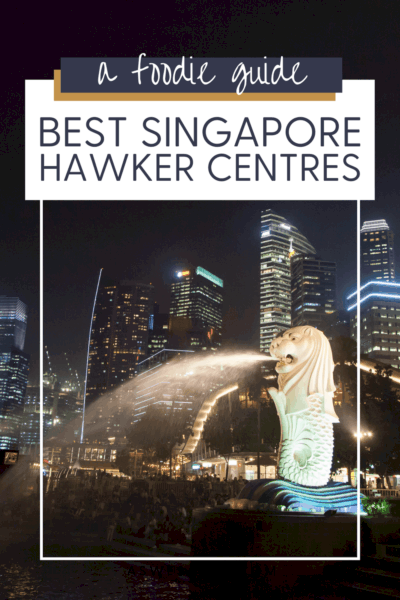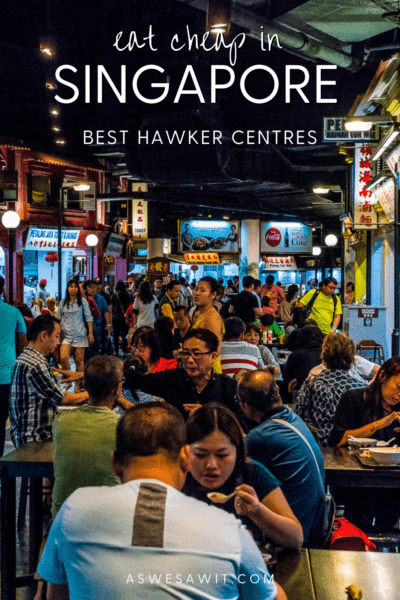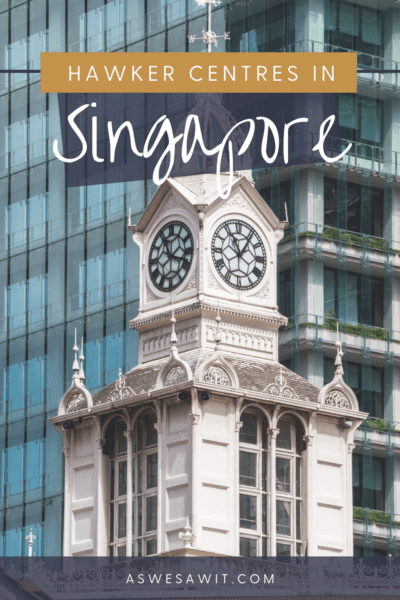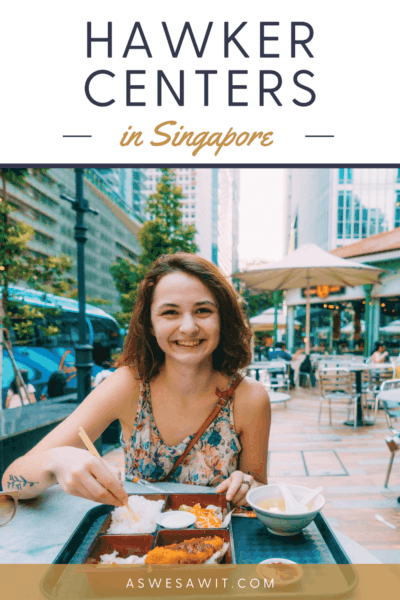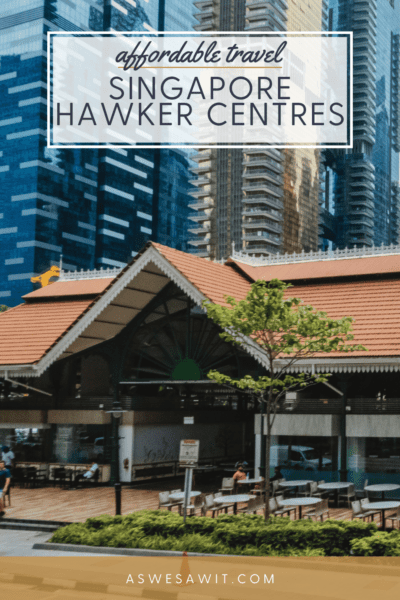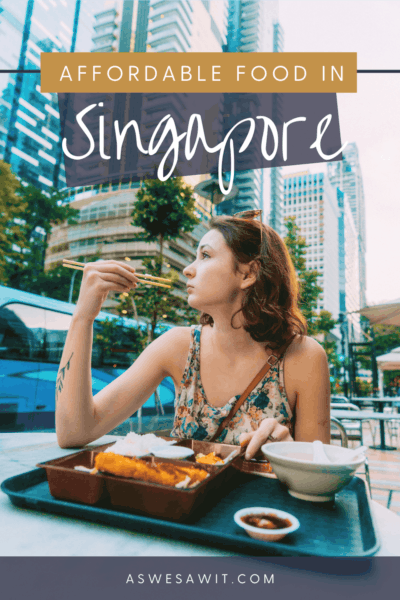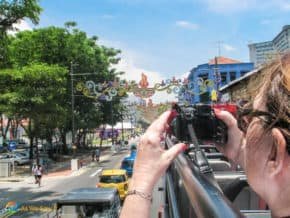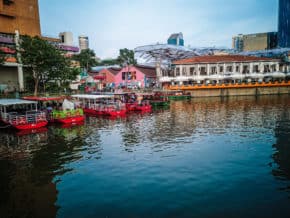When you visit Singapore, the last thing that you will have to worry about is food. Thanks to the nation’s melting pot history, Singapore’s foodie scene is second to none. You might even say that eating is the national pastime, and Singapore hawker centres are the national dining room.
UNESCO has added Singapore’s hawker culture to its List of the Intangible Cultural Heritage of Humanity, calling them “community dining rooms where people from diverse backgrounds gather and share the experience of dining over breakfast, lunch and dinner.” The list is impressive, with things like hurling in Ireland, traditional massage in Thailand, and sauna culture in Finland.
Singapore is not only made up of three traditional cultures (Chinese, Malay and Indian), it’s also home to immigrants and expats from all over the world. Malaysian, Indian and Chinese food are popular, but you can get every type of cuisine here, from traditional favorites to innovative dishes. So whether you’re a meat-lover or a vegan in Singapore, you’ll be a very happy traveller.
We’ve been to Singapore many times. Our best advice: skip the restaurants and eat at one of the city’s many hawker centres. Not only will you save money, you’ll enjoy some of the best street food Singapore has to offer.
Tip: Read our Penang food article for more on Malaysian flavors:
Singapore hawker centre FAQs
Before we give you the list, we should probably answer a few questions concerning hawker centres and what they’re all about. A lot of people don’t know anything about hawker culture in Singapore, so please bear with us.
What is a hawker centre?
A hawker centre is a building where you can find an assortment of hawker stands, which are street food stalls that sell foods and drinks. These are tables set up for patrons in the middle of the centre, just like at the food court at an airport or shopping mall.
Why are hawker centres so popular?
Hawker centers in Singapore are well loved for a few reasons. First of all, they are a great place for locals to get together with friends to chat and catch up. Hawker centres are like community dining rooms. Secondly, the prices are super affordable, which is a big deal in an expensive city like Singapore. Other reasons are that eating out is convenient, there’s a wide variety to choose from, and it’s a central part of Singapore’s heritage and culture.
How much is the typical meal at a Singapore hawker centre?
Most dishes at hawker centres are typically under $10 Singaporean dollars (about $7.50 USD).
Is Singapore the only country with hawker centres?
Nope. Hawker centres are common in Malaysia, Hong Kong, and Singapore. There’s also an indoor hawker centre on the ground floor of Yaohan Megamart in Gadong, Brunei.
Save our Singapore hawker center guide for later!
Add a pin to your travel board on Pinterest and share it on Reddit.
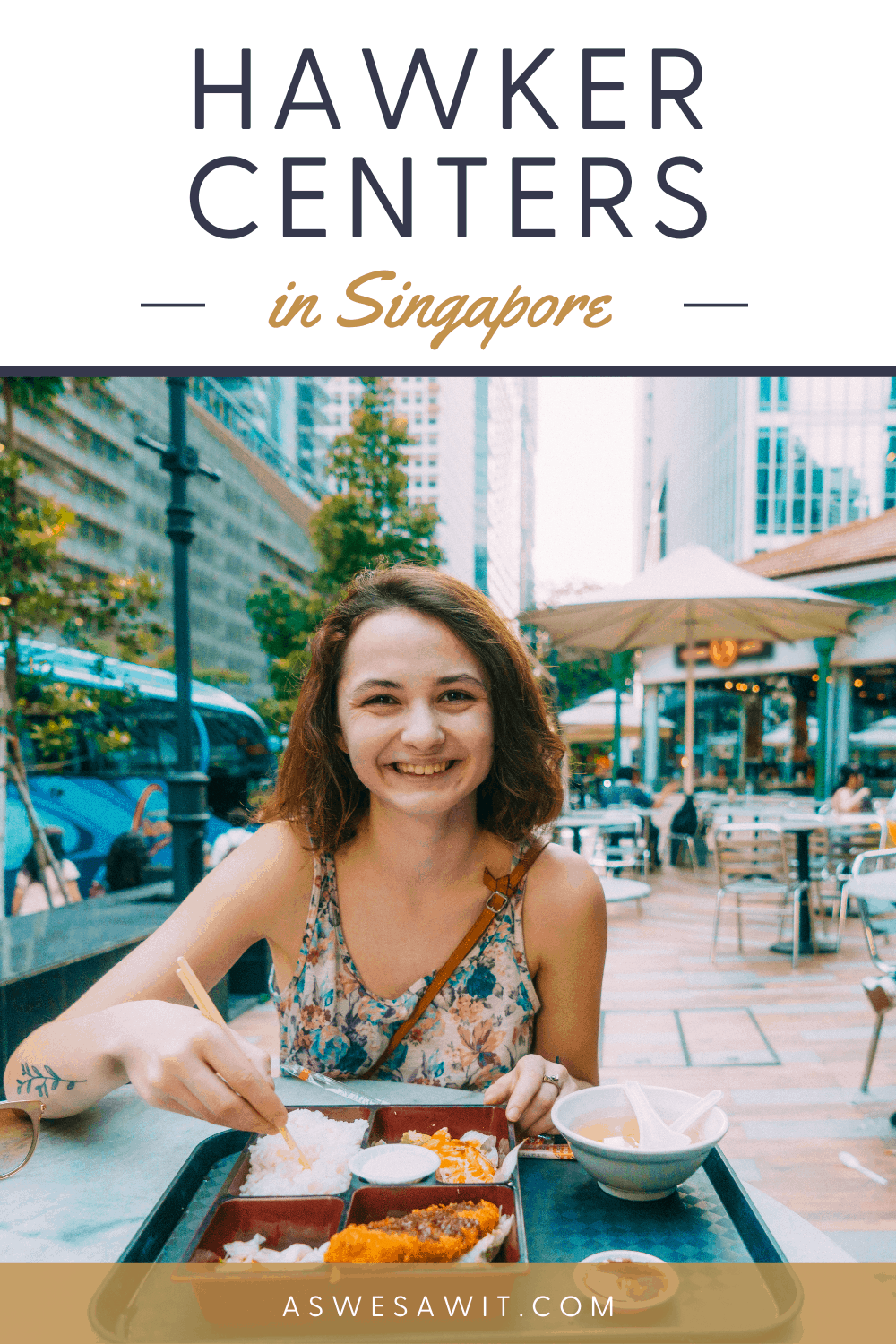
Where are the best hawker centres in Singapore?
Singapore has had hawkers since the island was first colonized. Today there are 114 markets and hawker centers, each one unique, and everyone has their favorite place to hang out.
Here’s a quick guide to a few of the most popular.
1. Maxwell Food Centre
If you happen to be in Singapore’s Chinatown district, the best place to go for local grub has to be the Maxwell Food Centre. The place has always been a popular hawker centre with both the locals and tourists, and houses some of Singapore’s best hawker stalls. There are over 100 stalls to choose from, and they offer all kinds of food for every meal of the day.
You can get all kinds of food here, but the highlight would be the Hainanese chicken rice from Tian Tian Chicken Rice. The stall is mostly known for being a Michelin Bib-Gourmand recipient, and for being the favorite of Gordon Ramsay and the late Anthony Bourdain. Another popular stall is Zhen Zhen Porridge stall, which offers a variety of wholesome Teochew-style porridge.
Although the hawker centre remains open ‘til nighttime, some of the stalls may close as early as 4 pm. Your best bet is to go in the morning for some breakfast or in the early afternoon for your lunch.
Like most of the hawker centres in the country, there will not be any air-conditioning in the dining hall. However, the place has tons of shade and is well ventilated, so you will not have to deal with eating in a stuffy environment.
- Address: 1 Kadayanallur St, Singapore 069184
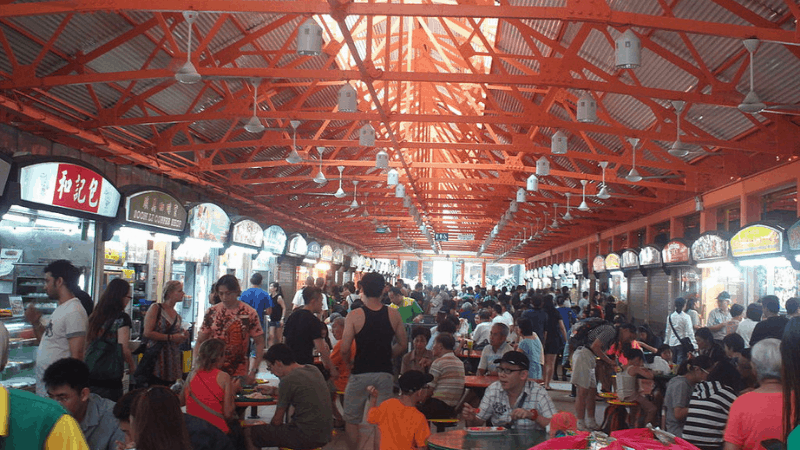
2. Chinatown Complex Food Centre
A lack of food choices will never be an issue when you visit the Chinatown Complex Food Centre. With over 260 food stalls in just one building, it is known as the largest hawker centre in Singapore, and it offers patrons all sorts of mouth-watering dishes. You can get just about anything that you crave at a reasonable price, from local favorites to international treats.
The most popular food stall in the Chinatown Complex Food Centre might just be the Michelin-starred Liao Fan Hong Kong Soya Sauce Chicken Rice and Noodle. It is where you can go to try one of the cheapest Michelin meals in the world, with the price for one dish being less than S$3 (around $2 USD).
If you’re into microbrews, be sure to check out Mikkeller. This Copenhagen-based brewery has 10 of its beers on tap as well as a selection of other kinds to enjoy.
ⓘ GOOD TO KNOW: In Singapore, the legal drinking age is 18. Drinking is forbidden in public places between 10:30 pm and 7:00 am. Also, there are a few parts of Singapore where you cannot drink between 7:00 am on Saturday to 7:00 am on Monday.
The hawker centre is in the heart of Chinatown and is a great one-stop place for all your local food cravings with an affordable price.
You can visit the Chinatown Complex for all your meals, but you might encounter some crowd during the lunch rush. The best time to go would be after breakfast hours and before the lunch break begins.
- Address: 335 Smith St, S 050335
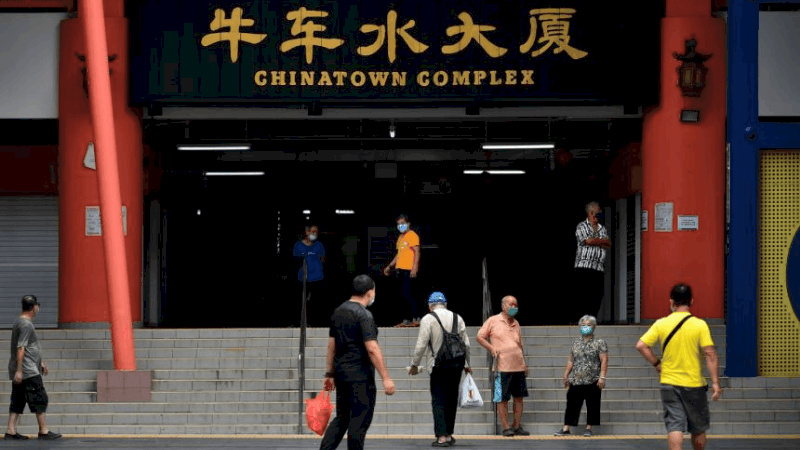
3. Old Airport Road Food Centre
When it comes to hawker centers in Singapore, Old Airport Road Food Centre is a favorite among locals. This is the place to go if you want to get some good hawker food for a cheap price. The place used to be a hidden gem that only locals knew about, but in recent years, it has gained popularity with tourists. The hawker center is aptly named, because it was built on the runway of the old Kallang Airport.
There are over 150 food stalls here, serving all the popular local dishes. You can find just about anything here, from noodles and rice to desserts and snacks. Due to the immense popularity of some of the stalls, a long queue is a common sight. However, the foods there are truly up to expectation, so you will not be disappointed with what you get.
It’s worth mentioning that because the stalls are so close together, the food hall may feel extremely stuffy with all of the heat and steam. The best time to go is after sunset, but if you prefer to go during the day, try to find a seat as far away from the stalls as possible to avoid the heat and traffic.
Opening hours for each stall will differ but most will be opened in the morning. You can come here to get some delicious breakfast before exploring the rest of Singapore.
- Address: 51 Old Airport Rd, Singapore 390051
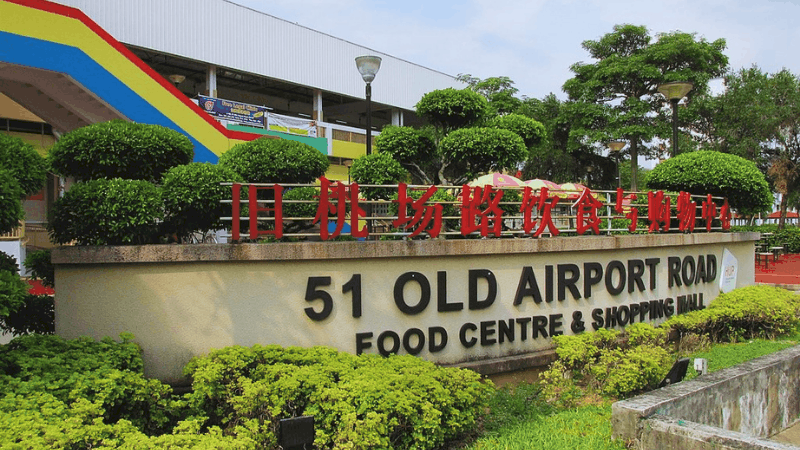
4. Tekka Centre
If you have a craving for some Indian food, the best hawker centre to visit in Singapore would be the Tekka Centre. This hawker centre is located in Little India and is where you can go to try some incredible Indian dishes from the Northern and Southern regions of India.
Oddly enough, the name comes from The Kia Kah, which in Hokkien means “foot of the bamboos.” This is a reference to the many bamboo plants that you can spot along the Rochor Canal.
One of the most popular dishes offered here is the biryani, and you can get them from either the Yakader stall or the Allauddin stall. You can also try some masala dosa, while you are here.
Tekka Centre is also a wet market and is one of the best places in the area to get some halal meats.
The market part of the Tekka Centre opens its doors at 5 AM, while some of the stalls in the food hall will only start operating at 7 AM.
The best time to visit the hawker centre is right before the lunch rush when the food hall is not too crowded. However, do note that some stalls may close as early as 1 PM, so try to get there earlier if you can.
- Address: Bukit Timah Rd, Singapore
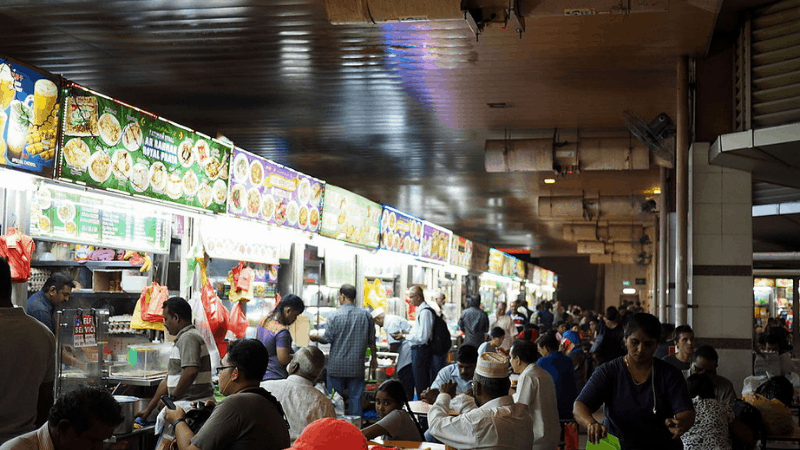
Other notable Singapore hawker centres include:
5. Lau Pa Sat Festival Market
We loved eating at this hawker centre. It’s super clean, has a light and airy feel and there are nearly 100 food vendors to choose from. No wonder it’s a favorite among both businessment and tourists.
You’ll find this iconic hawker inside a renovated 19th century Victorian building, conveniently located in Singapore’s financial district. It’s easy to recognize, as there’s a huge clock that tops the the octagonal building’s roof.
- Address: 18 Raffles Quay, Singapore 048582
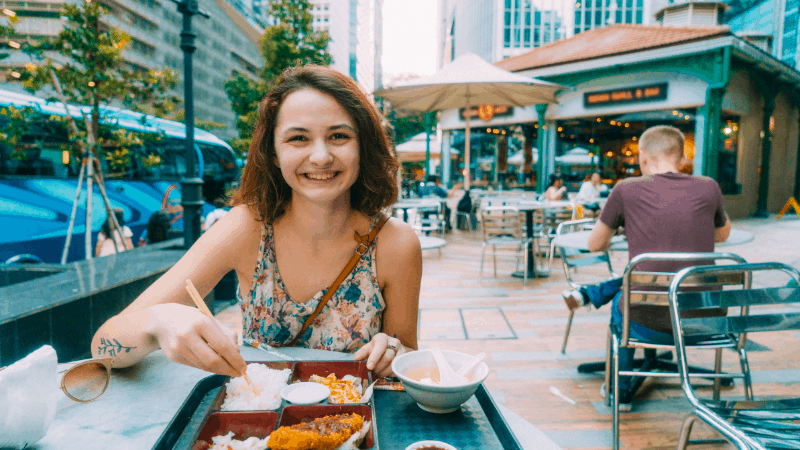
6. Geylang Serai Market
Pasar Geylang Serai is one of Singapore’s busiest wet markets. The food stalls are on the second floor.
Try the fried fish or banana fritters.
- Address: 1 Geylang Serai, Singapore 402001
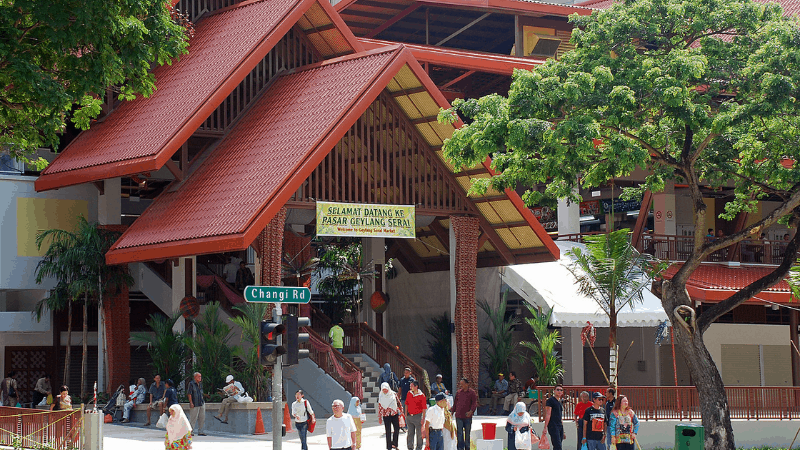
7. Marine Parade Food Centre
Our Singaporean friend took us here for a cup of kopi while we were visiting. It’s an old-style hawker centre that obviously sees no reason to invest in renovations.
The Malaysian-style beef noodles and Chinese-style chicken curry puffs get good reviews.
- Address: 84 Marine Parade Central, Singapore 440084
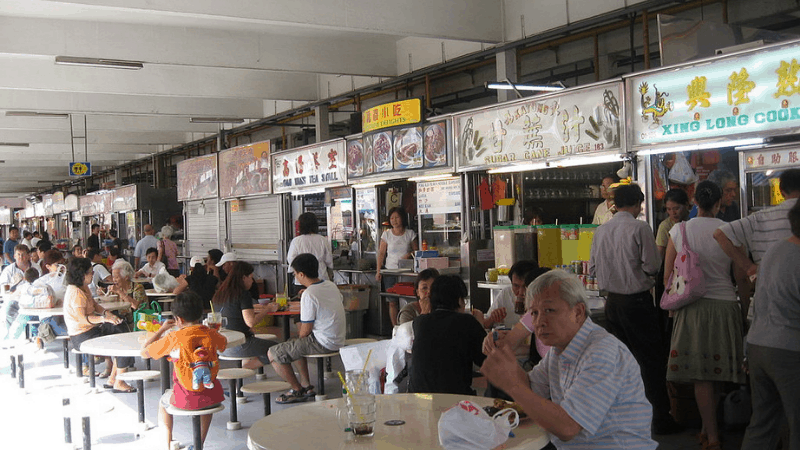
11 tips for visiting a Singapore hawker centre
- Wear casual and comfortable clothing. Singapore hawker centres are an informal affair. We suggest wearing loose clothing, as they are rarely air conditioned and it can get super hot and sticky.
- Singapore weather is hot and humid year round. You may wish to carry a small portable umbrella, as the weather can change unexpectedly.
- Carry cash, as not all stalls accept plastic. It’s always a good idea to carry a few small bills and coins.
- Before queueing up for food, you need to find a table and “chope” it! Chope is a Singapore slang term that means “To reserve a seat in a place to eat by placing a tissue packet on it.” Doesn’t have to be a tissue packet, though; an umbrella, scarf, or business card will do the trick, too.
- Then go wash your hands. Most centres have areas with large sinks for hand-washing. It’s a very big part of the culture.
- It helps to know what meal you’re in the mood for. Most hawker stalls focus on a specific dish (like Hainanese chicken rice) or a type of cuisine (such as satay). There are also drink stalls and dessert stalls to enjoy.
- Not sure where to eat? Find the busiest stall. A long queue indicates that stall is well known or serves really good food.
- At western food courts, you order, pay, wait for your food, and then take it to your table. But in Singapore and many parts of Asia, many food stalls will take your order and expect to be paid when they bring it to your table. So when you chope your table, be sure to note your table number so you can tell the staff where to deliver your order.
- Expect your drink to be served in a plastic bag with a straw. It works remarkably well and is much more eco-friendly than a styrofoam cup.
- At the end of your meal, deposit your dishes at the tray return area and head back to the hand-washing area to clean up.
- Singapore imposes hefty fines for littering, so be extra mindful about where you dispose of your waste. Interestingly, we didn’t find any trashcans on the street. Don’t be surprised if you end up carrying your garbage around with you until you get back to your room.
Singapore hawker center foods to try
Okay, so now that you understand the wide variety of food options available to you, you’re probably wondering what you should order.
What are you in the mood for? We have three articles that share the best of each of Singapore’s main cuisines. Why not start with those
- Chinese: 6 Hong Kong Foods You Need to Try
- Malay: Penang Food Guide: 7 Must Eat Foods + Best Places to Try Them
- Indian: 7 Famous Indian Dishes You Must Try
Prefer a Singapore hawker center food tour?
If you feel a bit overwhelmed by it all, we can’t blame you. Happened to us. Sometimes it’s hard to know what dishes you should try first, and then again, there might be certain things you can’t eat. For us, it’s seafood, and prawn paste seems to be in everything!
This is when a food tour is a godsend. A professional guide will not only give you advice about the best foods to eat, he’ll also give you context. By the end of the tour, you’ll have safely tried new foods, you’ll understand a lot more about the history, culture, and heritage of Singapore, and you’ll know some of the best places where the locals like to eat.
There’s something to be said for navigating Singapore’s hawker centers like a local.
Will you visit a hawker centre in Singapore?
We believe that trying local food is one of the best travel experiences you can have.
And there’s no better way to do it than at Singapore’s hawker centers, where locals come and break bread together.
Inspired? Pin this post and share it with your friends!
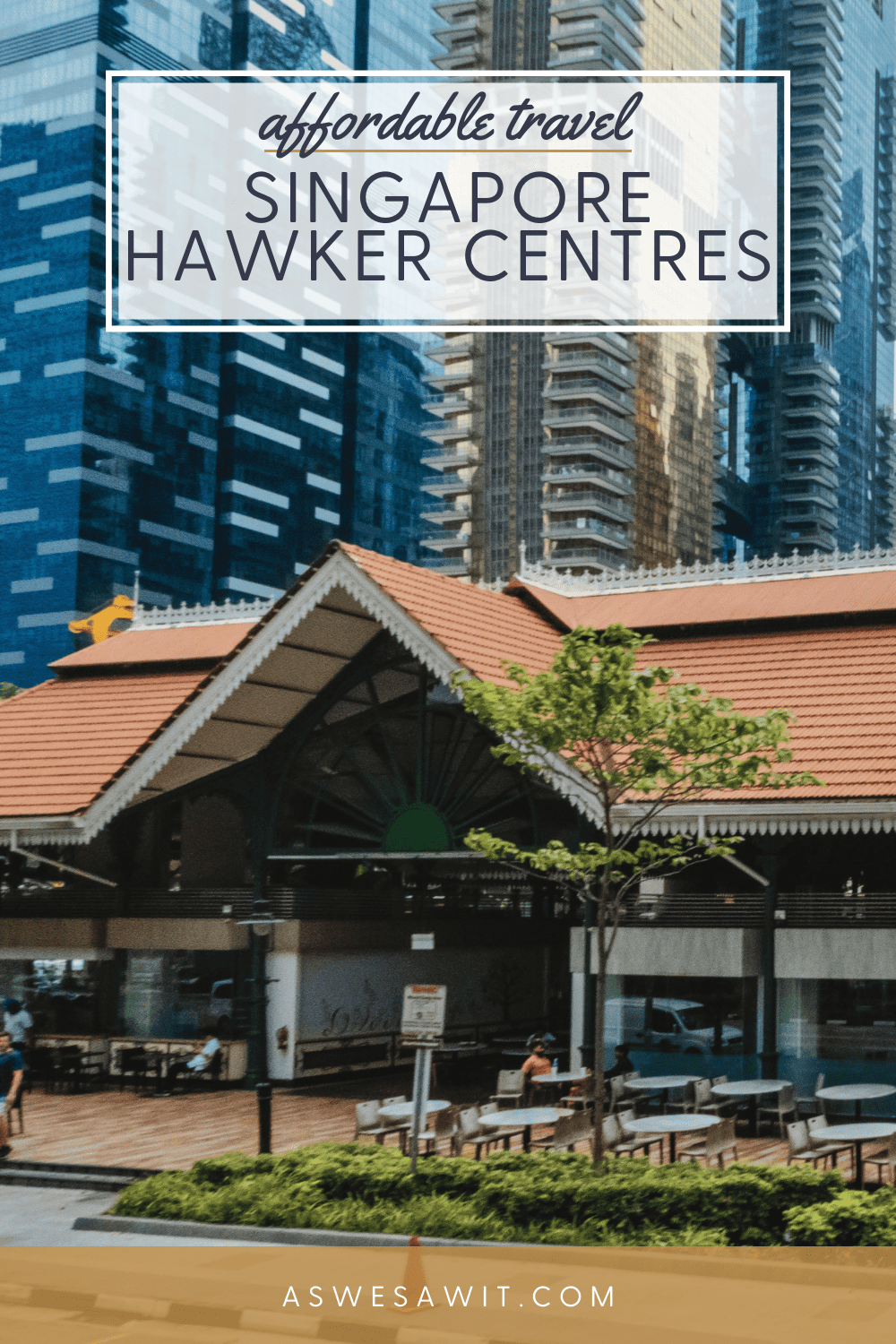
Photo credits: CC BY-SA 4.0, via Wikimedia Commons
- Tekka Centre: Nick-D
- Old Airport Road Food Centre: Orderinchaos
- Maxwell Food Centre: Ypsilon from Finland
- Marine Parade Food Centre: Terence Ong

